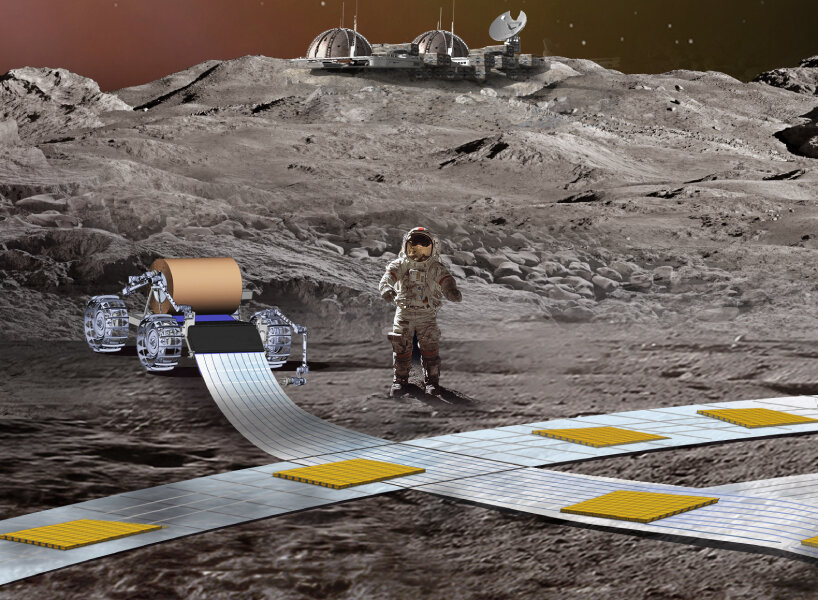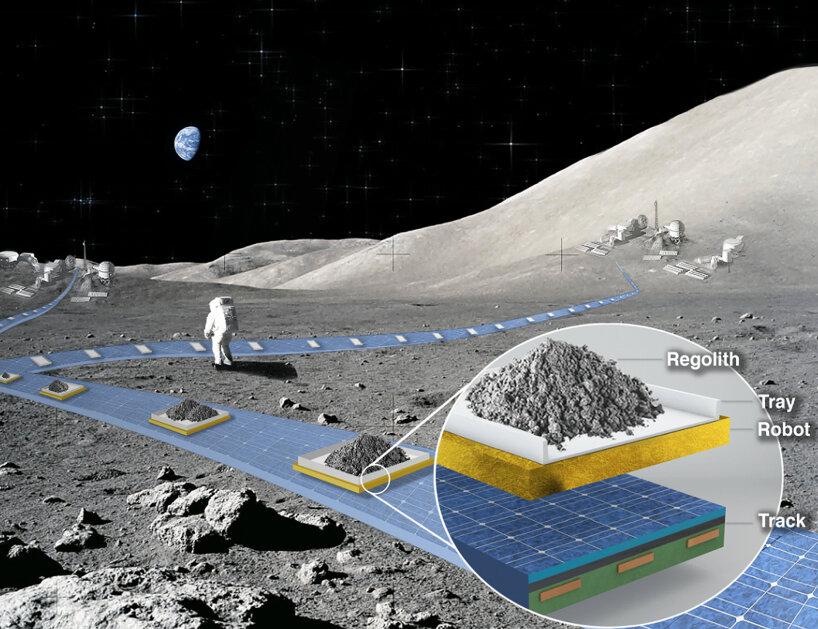A durable, long-life robotic transport system will be critical to the daily operations of a sustainable lunar base in the 2030s
As sci-fi concept to build a railway on the moon has inched closer to reality with the National Aeronautics and Space Administration (NASA) setting aside funds to bring the concept to life.
The Flexible Levitation on a Track (Float) is one of six projects chosen under NASA’s Innovative Advanced Concepts (NIAC) program and could go on to become new space missions.
The lunar railway could open a new chapter in space missions, allowing astronauts to transport items and material more easily and paving the way for long-term human presence on the moon.
“We want to build the first lunar railway system, which will provide reliable, autonomous, and efficient payload transport on the Moon,” robotics expert Ethan Schaler of NASA’s Jet Propulsion Laboratory in Pasadena, California explained.

The project was first proposed in 2021 to revolutionize transportation and logistics for lunar missions and a sustainable lunar base by 2030.
“A durable, long-life robotic transport system will be critical to the daily operations of a sustainable lunar base in the 2030s,” Schaler added.
NASA’s lunar railway system to have no moving parts
The lunar railway will assist in the transportation of loads in varying shapes up to 110 tons in weight‚ primarily from landing zones to more permanent outpost settings.
NASA’s initial design indicates that FLOAT will have no moving parts to minimize lunar dust.
It consists of magnetic robots levitating over a three-layer film track to reduce abrasion from dust on the lunar surface.
Speed is not of the essence in FLOAT as the carts mounted on these robots will move at roughly 1 mph (1.61 km/h).

The robots will be kept afloat by a layer of graphite with a flex-circuit layer generating electromagnetic thrust to controllably propel robots along tracks.
“FLOAT will operate autonomously in the dusty, inhospitable lunar environment with minimal site preparation. FLOAT robots have no moving parts and levitate over the track to minimize lunar dust abrasion/wear, unlike lunar robots with wheels, legs, or tracks,” Schaler added.
The tracks can unroll themselves or be reconfigured over time to match changes on the lunar surface.

“Its network of tracks can be rolled up / reconfigured over time to match evolving lunar base mission requirements,” Schaler noted.
NASA has plans to establish a permanent lunar base for future space exploration and plans to send astronauts back to the moon as early as 2026.
Do you have a story in your community or an opinion to share with us: Email us at thestandard256@gmail.com
Or WhatsApp Us on +256750474440
